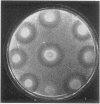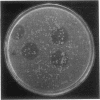Abstract
Current methods of identifying Pasteurella pestis rely heavily on tests specific for detecting fraction I, the envelope antigen. Pesticin I, a bacteriocin inhibitory for P. pseudotuberculosis, has been demonstrated in nearly all tested strains isolated from human infections. The results of using this characteristic as an identifying trait for P. pestis were compared with results reported for detecting fraction I by fluorescent-antibody and antiserum-agar techniques. Data indicate that, although certain atypical strains of P. pestis fail to react in one system or the other, a combination of these tests provides positive identification in all cases. Detection of P. pestis in contaminated materials is greatly facilitated, and the simplicity of this test makes it a valuable tool in the study of plague infections and an important adjunct to methods currently in use. The use of the pesticin I assay is not intended to replace other accepted techniques, but rather to supplement them and increase the effectiveness of plague investigation.
Full text
PDF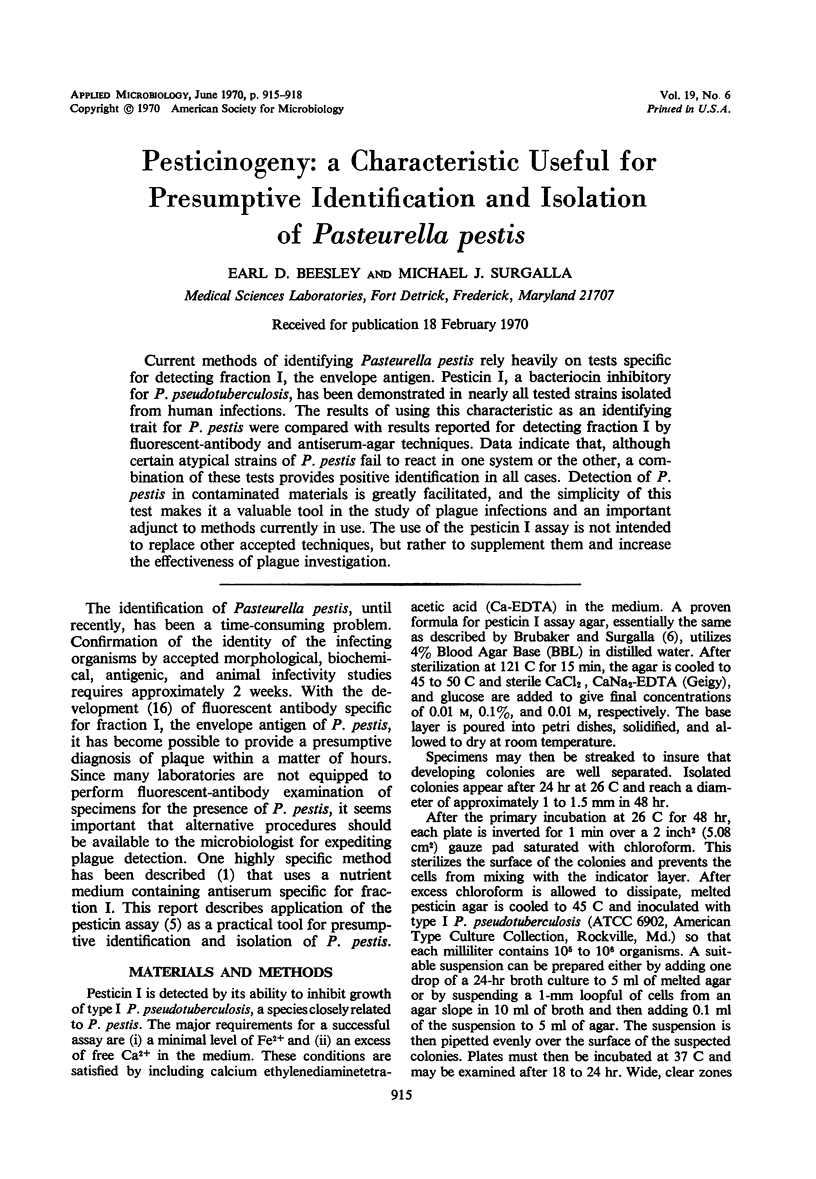
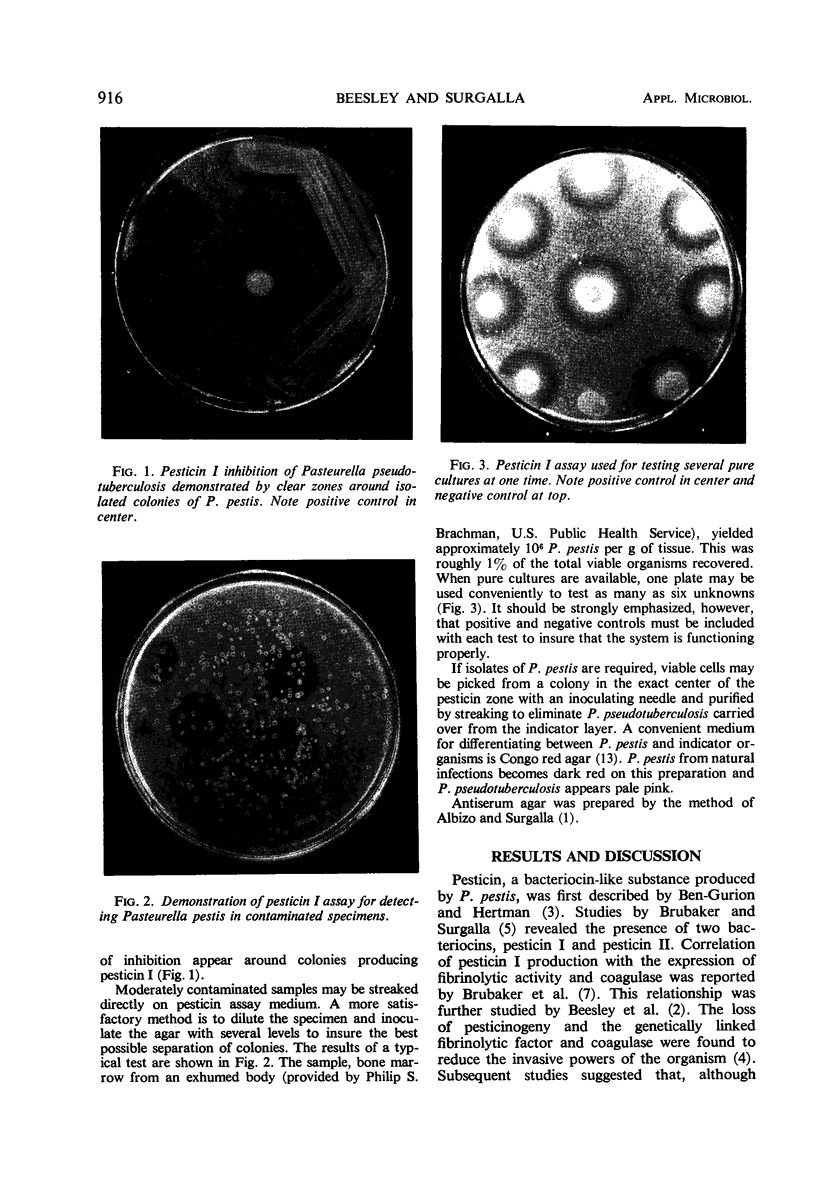
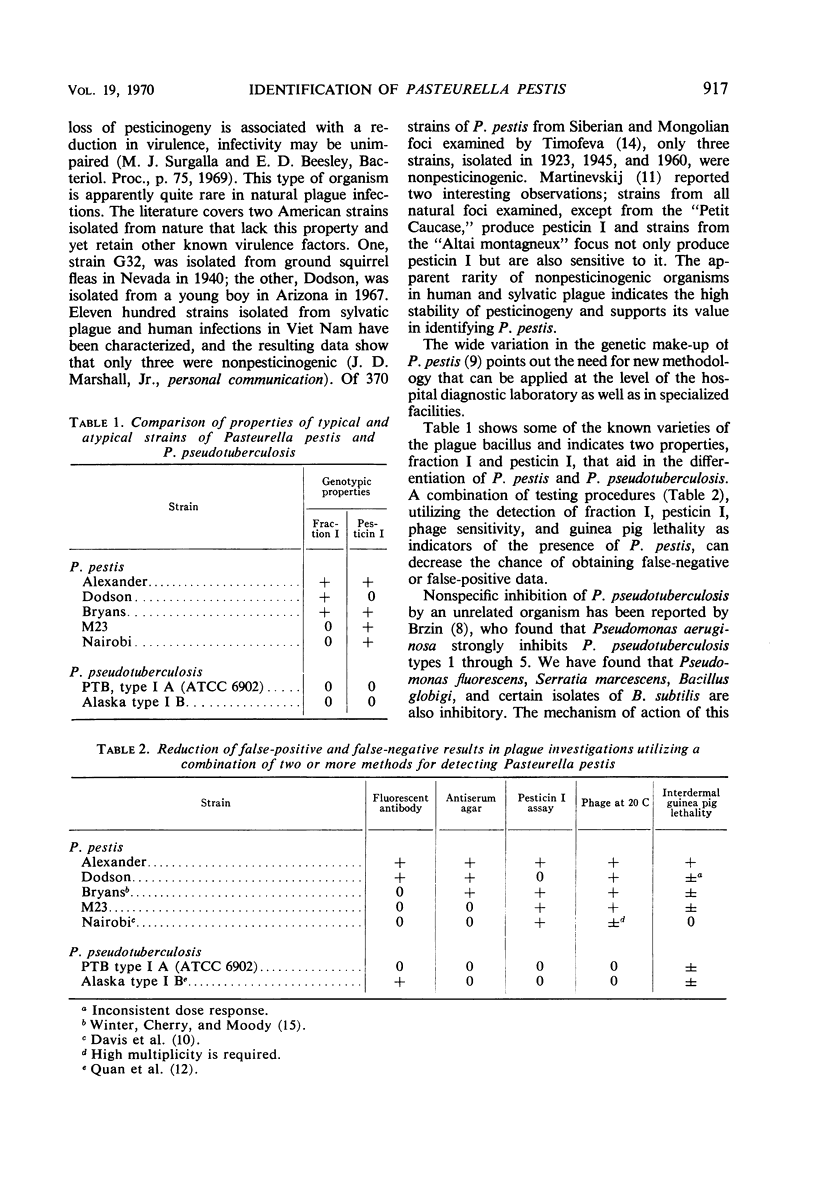
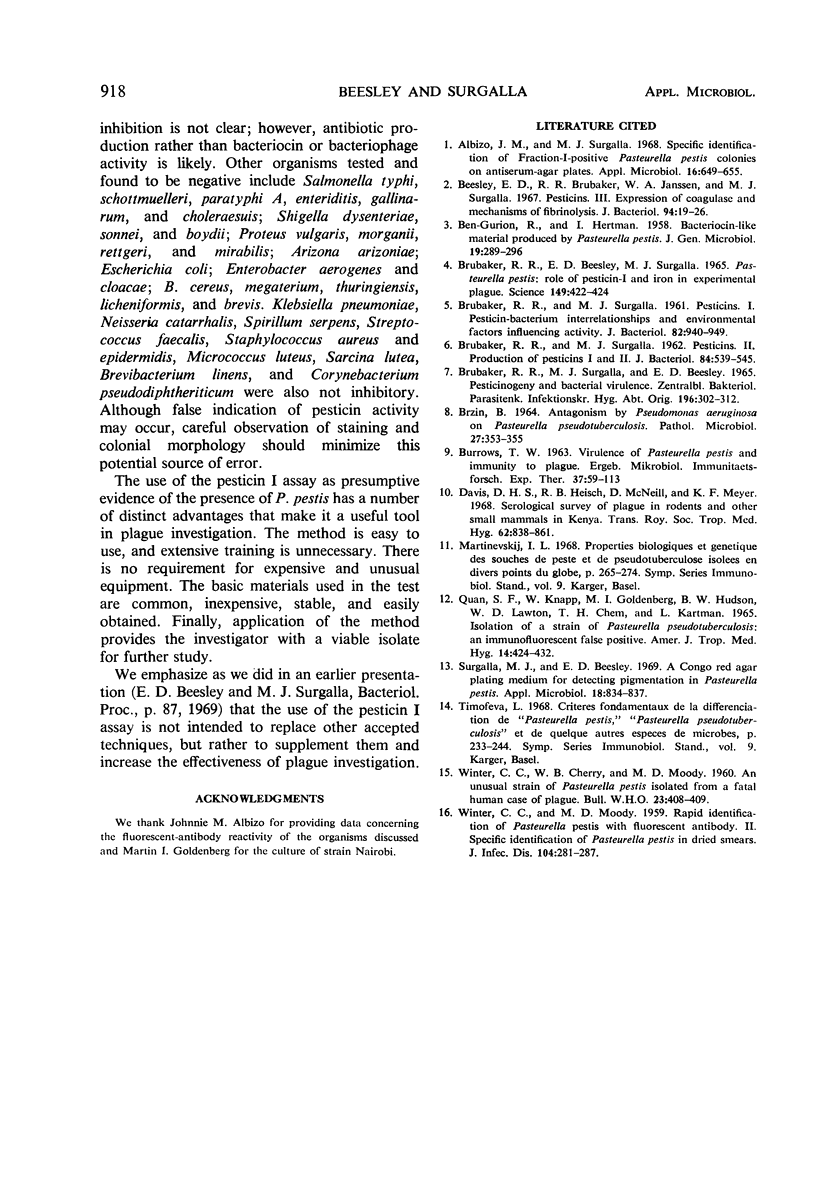
Images in this article
Selected References
These references are in PubMed. This may not be the complete list of references from this article.
- Albizo J. M., Surgalla M. J. Specific identification of fraction I-positive Pasteurella pestis colonies on antiserum-agar plates. Appl Microbiol. 1968 Apr;16(4):649–655. doi: 10.21236/ad0835494. [DOI] [PMC free article] [PubMed] [Google Scholar]
- BEN-GURION R., HERTMAN I. Bacteriocin-like material produced by Pasteurella pestis. J Gen Microbiol. 1958 Oct;19(2):289–297. doi: 10.1099/00221287-19-2-289. [DOI] [PubMed] [Google Scholar]
- BRUBAKER R. R., SURGALLA M. J. Pesticins. I. Pesticinbacterium interrelationships, and environmental factors influencing activity. J Bacteriol. 1961 Dec;82:940–949. doi: 10.1128/jb.82.6.940-949.1961. [DOI] [PMC free article] [PubMed] [Google Scholar]
- BRUBAKER R. R., SURGALLA M. J. Pesticins. II. Production of pesticin I and II. J Bacteriol. 1962 Sep;84:539–545. doi: 10.1128/jb.84.3.539-545.1962. [DOI] [PMC free article] [PubMed] [Google Scholar]
- BRZIN B. MICROBIAL ANTAGONISM BY PSEUDOMONAS AERUGINOSA ON PASTEURELLA PSEUDOTUBERCULOSIS. Pathol Microbiol (Basel) 1964;27:353–355. doi: 10.1159/000161483. [DOI] [PubMed] [Google Scholar]
- BURROWS T. W. VIRULENCE OF PASTEURELLA PESTIS AND IMMUNITY TO PLAGUE. Ergeb Mikrobiol Immunitatsforsch Exp Ther. 1963;37:59–113. doi: 10.1007/978-3-662-36742-1_2. [DOI] [PubMed] [Google Scholar]
- Beesley E. D., Brubaker R. R., Janssen W. A., Surgalla M. J. Pesticins. 3. Expression of coagulase and mechanism of fibrinolysis. J Bacteriol. 1967 Jul;94(1):19–26. doi: 10.1128/jb.94.1.19-26.1967. [DOI] [PMC free article] [PubMed] [Google Scholar]
- Brubaker R. R., Beesley E. D., Surgalla M. J. Pasteurella pestis: Role of Pesticin I and Iron in Experimental Plague. Science. 1965 Jul 23;149(3682):422–424. doi: 10.1126/science.149.3682.422. [DOI] [PubMed] [Google Scholar]
- Davis D. H., Heisch R. B., McNeill D., Meyer K. F. Serological survey of plague in rodents and other small mammals in Kenya. Trans R Soc Trop Med Hyg. 1968;62(6):838–861. doi: 10.1016/0035-9203(68)90013-8. [DOI] [PubMed] [Google Scholar]
- QUAN S. F., KNAPP W., GOLDENBERG M. I., HUDSON B. W., LAWTON W. D., CHEN T. H., KARTMAN L. ISOLATION OF A STRAIN OF PASTEURELLA PSEUDOTUBERCULOSIS FROM ALASKA IDENTIFIED AS PASTEURELLA PESTIS: AN IMMUNOFLUORESCENT FALSE POSITIVE. Am J Trop Med Hyg. 1965 May;14:424–432. doi: 10.4269/ajtmh.1965.14.424. [DOI] [PubMed] [Google Scholar]
- Surgalla M. J., Beesley E. D. Congo red-agar plating medium for detecting pigmentation in Pasteurella pestis. Appl Microbiol. 1969 Nov;18(5):834–837. doi: 10.1128/am.18.5.834-837.1969. [DOI] [PMC free article] [PubMed] [Google Scholar]
- WINTER C. C., CHERRY W. B., MOODY M. D. An unusual strain of Pasteurella pestis isolated from a fatal human case of plague. Bull World Health Organ. 1960;23:408–409. [PMC free article] [PubMed] [Google Scholar]
- WINTER C. C., MOODY M. D. Rapid identification of Pasteurella pestis with fluorescent antibody. II. Specific identification of Pasteurella pestis in dried smears. J Infect Dis. 1959 May-Jun;104(3):281–287. doi: 10.1093/infdis/104.3.281. [DOI] [PubMed] [Google Scholar]



